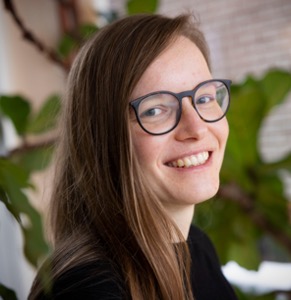Written by Karin Steffen, Ph.D.
 I’m a biologist, a molecular geneticist or bioinformatician. But overarchingly, all my research has linked back to evolution. There are two patterns that emerged in my academic career path so far. One, I’ve always consciously chosen engaging and supportive mentors and PIs. Their passion for their field and teaching about it has captivated me and made for numerous wonderful research experiences in fantastic, supportive work environments. And two, at the same time, in terms of topics, I seem to gravitate towards topics I naïvely think aren’t as interesting, already solved, or too complicated to begin with. That’s of course before I start working on them –then I realize the opposite is true. Some readers might see a connection between the two tenets, and I would be inclined the agree with that.
I’m a biologist, a molecular geneticist or bioinformatician. But overarchingly, all my research has linked back to evolution. There are two patterns that emerged in my academic career path so far. One, I’ve always consciously chosen engaging and supportive mentors and PIs. Their passion for their field and teaching about it has captivated me and made for numerous wonderful research experiences in fantastic, supportive work environments. And two, at the same time, in terms of topics, I seem to gravitate towards topics I naïvely think aren’t as interesting, already solved, or too complicated to begin with. That’s of course before I start working on them –then I realize the opposite is true. Some readers might see a connection between the two tenets, and I would be inclined the agree with that.
After a uneventful B.Sc in biology in Germany, I moved to Sweden for an exchange semester –ultimately staying 12 years and leaving with a PhD. (In the European education system, a separate master’s degree is typically a requirement to be admitted to doctoral studies.) During my M.Sc. studies at Uppsala University, I worked on several projects in plant systematics and also social amoebae. Did you know that some gourds repeatedly floated from central Asia all the way to Australia to establish new lineages there? Or that slime molds can be both unicellular amoebae and a multicellular organism with defined cell fate? Being able to peak into many different study systems really sparked my curiosity. For my PhD, I moved from botany to zoology studying sponges, a group of mainly marine animals among the earliest sisters to all other animals. My research included several different ‘-omics’ approaches such as genomics, transcriptomics, metabolomics as well as dabbling into microbiome work and natural product chemistry. It’s kind of like looking at the same organisms from a global/population level to the organisms and its individual molecules. Sponges are quite different from the typical concept of an animals you might have. This is easily illustrated by for instance their bodies not having a bilateral symmetry or the fact that they don’t have any organs and hardly any true tissue. They are so enigmatic that even telling if they’re alive or dead after transferring a specimen to an aquarium can be a challenge. So, while I was able to contribute some results, there’s still plenty to discover.
For my postdoc here at Vanderbilt in the US, I once again changed everything yet adhered to my principles. At the Rokas lab, I switched to mycology, a new branch on the tree of life. I’m interested in understanding the evolution of pathogenicity in fungi, by comparing opportunistic pathogens to their non-pathogenic sister species. It’s tough starting in a new field, feeling like you can’t catch up with all past research while also keeping up with the new research. But this position allows me to draw from the skills I build in previous career stages, challenges me to learn about another idiosyncratic group of organisms and allows me to work collaboratively on a whole new level. Moreover, I’m thoroughly enjoying the research community in evolution at Vanderbilt fostered by the Evolutionary Studies Initiative here. I’m thankful for this opportunity, it is enriching to experience different countries, cultures, people, and labs.